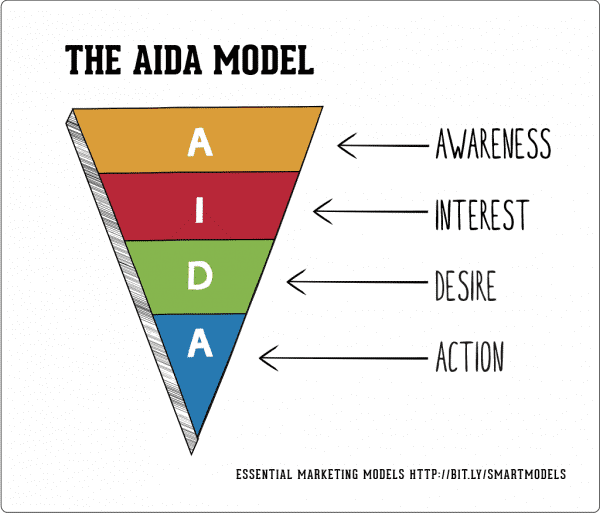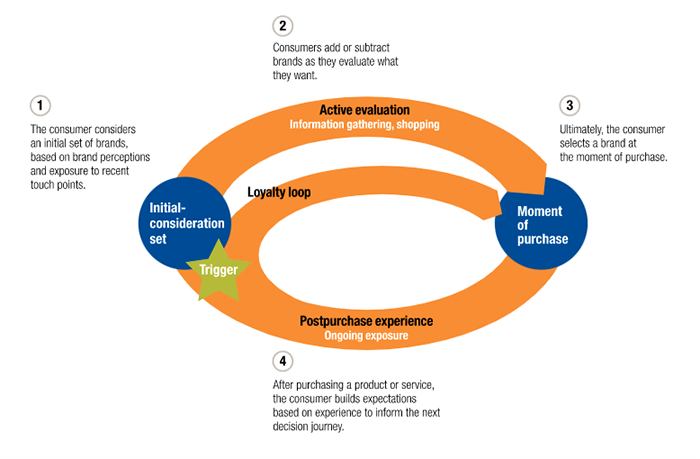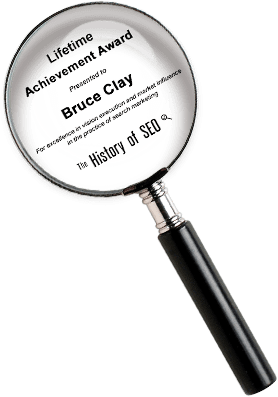How SEO Supports the Customer Journey

When someone is looking to buy a product or service, they have many potential touch points with any given brand.
One of the major touch points is the search engine results pages. Because of that, your SEO strategy can help a person go from “just learning or browsing” to “sign me up!” or “ready for checkout.”
In this article, I’ll explain how SEO supports the customer journey as we discuss:
- What is a customer journey?
- How does SEO support the customer journey?
- Awareness phase
- Consideration phase
- Decision-making phase
- Refinement over time
- FAQ: How can I effectively use an SEO strategy to support customers through their decision-making journey?
What Is a Customer Journey?
A customer journey, also known as a buyer journey or consumer decision journey, is the steps that a person takes on their journey to decide to buy a product, service, or convert in some other way.
There are many different theories on how the customer journey goes. One of the most well-known models is AIDA, which stands for awareness, interest, desire, and action.

This classic model shows a linear journey that starts with a person’s awareness of the brand, product, or service and ends with an action (like a purchase, download, or something else).
However, some argue that the linear journey is no more — that it’s not that simple. Consumers are faced with many new touchpoints and more decisions than ever. McKinsey is one of the proponents of a cyclical consumer decision journey that looks more like this:

Whatever model you choose to follow, know that there will likely be some form of awareness, consideration, and, ultimately, a decision in the process. Gartner provides some useful tips on creating a customer journey map here and here.
You will, of course, have many different marketing channels to choose from to help your potential customer on their journey. SEO should be one of them.
How Does SEO Support the Customer Journey?
Research shows that when a person is interested in researching or buying, they first turn to the search engines.
- Forrester research found that 71% of people turned to search engines for discovery, and 74% used them for consideration/purchase.
- Google data shows 43% of consumer goods shoppers have used search in their most recent shopping journey to become inspired, browse or research. And 82% of evergreen shoppers used a search engine related to their shopping.
- BrightEdge research (2019) found that across five sectors, the organic search channel contributed the most revenue at an average of 44.6%. And B2B companies, in particular, generated twice as much revenue from organic search as from any other channel.
Depending on the industry you’re in, search engine optimization can support many stages of the customer journey, from initial research to the decision-making process.
Let’s next look at the many ways SEO can support the customer journey using a very generic customer journey of awareness, consideration, and decision-making.
Awareness Phase
Potential customers need to become aware of your product or service as they search online. One of the most obvious ways to ensure this will happen is to show up on Page 1 of the search results.
Keyword Research
Keyword research is how you begin to understand the search queries your target audience is using when they turn to search engines, and what they want when they are using them. This step is the foundation of your content and communications strategy for the organic search channel.
For more, read:
- Keyword Research — How to Select Keywords
- What Are Keywords? Why Are Keywords Important to SEO? And How Do You Do Keyword Research?
Competitor Research
Once you know the keywords you are targeting, you can begin to size up the competition. Who shows up in the top ten results for those queries? This helps you better understand not only what content Google thinks is relevant and quality for that query, but also what the competition is doing right (and wrong). The goal is to be least imperfect compared to competitors.
For more, read:
SERP Research
What kind of content shows up for the keywords you are targeting? Are there videos and images along with the blue organic links? Make sure you are creating the type of content that is relevant to that query.
For more, read:
An Optimized Website
To compete in the search results, you also need a website that is optimized from the ground up to provide a good experience for users to browse and for search engines to crawl. If you provide neither, it will be harder for you to rank on Page 1.
For more, read:
Consideration Phase
While potential buyers are in their research and comparison phase, they are learning more about your product, service, or brand, as well as considering others. Your job is to get them to choose you, and you can do that through various SEO strategies.
Optimized Search Listing
First things first, you need them to click on your content from the search results. So anything you can do to make your search listing stand out, do it! There are a ton of ways to optimize your search listing, and meta tags and structured data are two important ways to make your search listing stand out.
For more, read:
Content, Content, Content
This may be one of the most important things to get right. You will map the content you produce on your website to your keywords to help your potential customers along their journey.
Mapping your content to your keywords means understanding the intent behind them so that the content best answers the searcher’s query. It also involves planning out the architecture of your website — strengthening your topic silos, knowing which content will live in the main navigational pages/directories and which on the blog, and so forth.
Making your content high-quality is another critical step. You must understand the guidance Google sets forth in its Search Quality Evaluator Guidelines and know what the top-ranked pages are doing as well.
As you create quality content, you will acquire links, which in turn will help generate more awareness. And, as people browse your website, you have the opportunity to present other types of content to help them along their journey, for example, a helpful e-book or guide they can download.
For more, read:
- SEO Siloing: What, Why, How
- Complete Guide to the Fundamentals of Google’s E-E-A-T
- What Makes a Webpage Quality?
- The Always Up-to-Date SEO Checklist
Decision-Making Phase
Along their journey, customers will have learned from you and added you to their list of companies to consider. But in order to seal the deal, people look at certain factors like reputation and how you compare to competitors.
Robust Decision-Making Tools
You’ll want to make sure your product/service pages are compelling and as useful as possible. Maybe you also have a landing page on your website that has a handy comparison chart of your brand/product/service compared to your competitors, or some sort of tool or widget they can interact with to help them make a decision.
Customer Reviews
Ensure you have a way of capturing your customer reviews and displaying them on your website. Customer quotes and a star-rating system can go a long way in helping your customer decide to go with you instead of your competitors.
Also, think about things like your Better Business Bureau profile as well — many people go there to scope out a potential vendor. For businesses in the U.S., we recommend claiming your BBB profile and then monitoring and responding to reviews.
For more, read:
Refinement over Time
Customer journeys can change, algorithms can change, competitors can change, and other things that are out of your control can change. So as you leverage SEO for your customer journey, ensure you are always tracking your performance through SEO tools and analytics.
And if something happens with your rankings, you need to understand better why and fix it right away.
For more, read:
There’s a lot you can do to support potential customers through the different phases of their decision-making process. But just make sure your search presence is strong to help people find you both upfront and throughout their customer journey.
If you need help analyzing and improving your SEO strategy, contact us for a free quote and consultation.
FAQ: How can I effectively use an SEO strategy to support customers through their decision-making journey?
A well-crafted SEO strategy can significantly influence and support customers’ decision-making journey. As an expert in the field, I have witnessed firsthand the transformative impact of leveraging SEO to guide potential customers seamlessly from initial awareness to confident decision-making.
Understanding the Customer Journey
A successful SEO strategy begins with a deep understanding of the customer journey. By comprehending the stages of awareness, consideration, and decision-making, you can tailor your content to meet customers’ needs at each step. This involves extensive keyword research to identify potential customers’ terms during their search. Expert tip: Go beyond industry jargon and delve into the language your customers use to maximize relevance.
Crafting Compelling Content
Relevant and high-quality content is integral in engaging audiences and positioning your brand as an authority within its niche. Develop informative blog posts, videos, and guides addressing pain points and offering solutions. Don’t underestimate the power of long-form content that delves deep into a topic, as it captures users’ attention and keeps them on your site longer.
Optimizing Search Listings and User Experience
Optimize your search listings with captivating meta titles and descriptions. These elements serve as your digital storefront, enticing users to click through to your content. Additionally, ensure your website is user-friendly and responsive across devices. A seamless browsing experience enhances credibility and encourages users to explore further.
Leveraging Social Proof and Reviews
In the decision-making phase, potential customers seek reassurance. Highlight customer reviews, testimonials, and case studies on your website. Positive feedback serves as social proof, instilling confidence and aiding decision-making. Users who see others benefiting from your product or service are more likely to convert.
Continuous Monitoring and Improvement
An effective SEO strategy is not static; it evolves with changing algorithms and user behavior. Regularly monitor your site’s performance using analytics tools. Assess which keywords drive traffic, study user behavior, and adjust your content and strategy. Stay updated with industry trends, and algorithm changes to maintain your competitive edge.
A well-executed SEO strategy can be a powerful ally in guiding customers’ decision-making. By comprehending the stages of the customer journey, creating compelling content, optimizing search listings, leveraging social proof, and embracing a culture of continuous improvement, businesses can enhance their online presence, build trust, and drive customer conversions.
Step-by-Step Procedure for Effective SEO Strategy Implementation:
- Conduct thorough research on your target audience and their preferences.
- Identify relevant keywords and search terms using keyword research tools.
- Devise a plan of content that supports each stage of customer journeys.
- Generate high-quality content that is engaging, informative, and tailored specifically to the stage.
- Optimize on-page elements, including meta titles, descriptions, and headers.
- Ensure your website is mobile-friendly and user-friendly for seamless navigation.
- Implement schema markup to enhance search engine visibility.
- Regularly update and refresh your content to maintain relevance.
- Encourage user-generated content and customer reviews.
- Leverage social media platforms to promote your content and engage with your audience.
- Build high-quality backlinks from reputable and relevant sources.
- Monitor your website’s performance using analytics tools.
- Track keyword rankings and organic traffic growth.
- Analyze user behavior to identify opportunities for improvement.
- Stay updated with industry trends and algorithm changes.
- Adapt your SEO strategy based on data-driven insights.
- Continuously refine and optimize your content and strategy.
- Foster a culture of learning and experimentation within your team.
- Engage with your audience through comments, forums, and social media.
- Collaborate with SEO experts or agencies for advanced strategies and insights.
26,000+ professionals, marketers and SEOs read the Bruce Clay Blog
Subscribe now for free to get:
- Expert SEO insights from the "Father of SEO."
- Proven SEO strategies to optimize website performance.
- SEO advice to earn more website traffic, higher search ranking and increased revenue.

11 Replies to “How SEO Supports the Customer Journey”
In terms of contemporary SEO, on-page optimisation should prioritise customer service before monitoring off-page
Your Blog is very nice.
Wish to see much more like this. Thanks for sharing your information
Thanks for sharing this amazing content. Your information is very outstanding to read.
it’s an amazing website with an amazing read thank you for providing us great and informative content.
If we talk about modern SEO then on-page SEO should be focused on serving the customers, and then it should look out for off page side.
Thank you for the post. I feel smarter and more intelligent by going through this blog post.
LEAVE A REPLY









